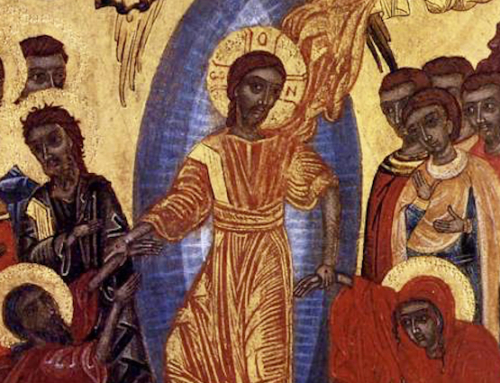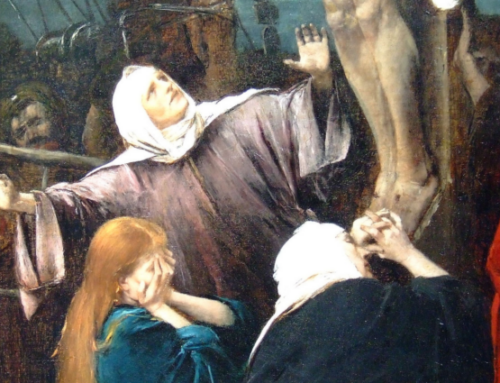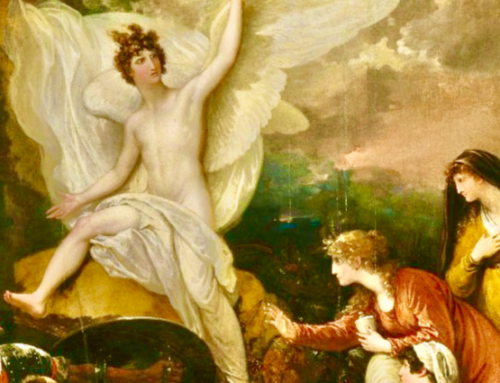
Many American readers will know of BBC Radio 3, Britain’s leading radio network for classical music and the arts. Certainly, in recent years, many U.S. artists have created an immense reputation in Britain: Leonard Slatkin, for example, with his chief conductorship of the BBC Symphony Orchestra, and Marin Alsop of the Baltimore Symphony Orchestra becoming the first woman to conduct the world famous “Last Night of the Proms” at the Royal Albert Hall. Increasingly, American music is heard in Britain—and I can recall, in the 1990s, a brilliant performance by Slatkin of Copland’s Third Symphony: a big work, a work of the outdoors, a piece that (for me) conjures up wide landscapes, and the surge of life in cities that seldom sleep.
During the early-1980s, Radio 3 was very fond of playing another work by an American composer—the Second Symphony, subtitled “Romantic”, by Howard Hanson. I remember my first encounter with the work, and was entranced. Perhaps even more than the Copland, I gained a sense of the vast mysteries of the North American forests and mountains from this work, and felt that I had stumbled across an American Sibelius. Hanson (1896 to 1981—a lifetime spanning the years from when the West was just won, to the age of nuclear proliferation) was a great teacher and campaigner for music—especially the music of his native land. Written for the great Serge Koussevitsky in Boston—a conductor whose advocacy of new music knew no bounds—the Romantic Symphony was an immediate success; its lyrical style and tender second movement, its careful developments and build-ups to great orchestral peaks providing the Boston Symphony players with a truly inspiring half-an-hour of performance.
For my money, the greatest record made of the “Romantic” was by Detroit-born conductor Charles Gerhardt, with the British orchestra, the National Philharmonic (a highly-polished ensemble, assembled for showcase recordings—in this case, the RCA label). Today, however, digital versions from Slatkin in St. Louis and Gerard Schwarz in Seattle may be savoured. But if Hanson captured a vivid, straightforward sense of old America, the more astringent, possibly more dynamic sound of Roy Harris gave a true 20th-century edge to the U.S. symphonic school—yet sacrificing none of the melody, the communication with listeners and audiences—that is the hallmark of the American composer.
Harris (1898-1979) was actually credited with writing the first truly American symphony—a taut, concise, elemental, occasionally turbulent, and sometimes folkish orchestral landscape, whose stunning originality cannot be denied. First played in 1939, again by Koussevitsky, the score was championed by Leonard Bernstein—that demonstrative New York maestro making a triumphant record of it for CBS. The British record label, Chandos, has also set down a very involving and impressive reading, with the exceptionally fine Detroit Symphony under the Estonian conductor, Neeme Jarvi.
Harris’s Third Symphony begins under what appear to be stormy skies: the opening, a great, serious statement—a monolith of sound, a determined announcement. The 20th-century lives in this opening. Mists then begin to clear, and a lively, simple tune on woodwind dances into view, but still the orchestra seems to tremble: folk-music from a pine forest can be discerned, but it seems that it is only a glimpse of a time there was. Harris’s seriousness resumes, and the work builds and builds in energy, like a storm, or perhaps like a machine, until we are drawn to a powerful conclusion—another overwhelming American landscape, and yet this work is only 20 minutes or so in length. How could this musical architect fit so much into so brief a space? It can also be observed, that for such a modern piece, the composer uses a strongly classical style. This writing has all the integrity, the cohesion, the flow of a Haydn symphony, or perhaps the first movement of Beethoven’s Second.
Roy Harris was the composer of some 18 symphonies, and recently, Radio 3 broadcast the Ninth: less concise than the Third, and perhaps without that unique flash of inspiration which No. 3 possesses, but still a work very much in the American mode—a work for our time, or at least the life and times of the 1960s’ generation.
Entitled “American Pastoral”, this article could not be completed without reference to Samuel Barber—a figure who is known to British audiences, chiefly as a result of the Essays for Orchestra, which are often played by visiting American ensembles. In 1981, the Chicago Symphony and Sir Georg Solti, gave a stunning reading of Essay No. 1 at their Prom at the Royal Albert Hall, and the following year, the Philadelphians under Muti performed the more enigmatic No. 2. Barber’s troubled lyricism, with traces of tragedy, seem ideal complements to Mahler or Bruckner—or Prokofiev—symphonies. Yet it is the Violin Concerto, the Adagio for Strings, and the dream-world of Knoxville: Summer of 1915 which show us Barber’s mastery of true sentimentality—a sentiment that is never predictable or shallow. Instead, this is music about memory, place, real emotions—the joy of looking into a summer sky, or (for those people of 1915) watching an electric tram make its somewhat startling progress along main street. The Knoxville music is a setting of a poem by James Agee—his words creating, for this English listener, perhaps the perfect American pastoral…
“It has become the time of evening when people sit on their porches,
rocking gently and talking gently and watching the street…
People go by; things go by.
A horse, drawing a buggy, breaking his hollow iron music on the asphalt;
a loud auto; a quiet auto; people in pairs, not in a hurry,
scuffling, switching their weight of aestival body, talking casually,
the taste hovering over them of vanilla, strawberry, pasteboard and starched milk,
the image upon them of lovers and horsemen, squared with clowns in hueless amber.
A streetcar raising its iron moan: stopping, belling and starting…
the bleak spark crackling and cursing above it like a small malignant spirit set to dog its
tracks; the iron whine rises on rising speed; …rises again, still fainter, fainter, lifting, lifts,
faints forgone: forgotten. Now is the night one blue dew.”
Books related to the topic of this essay may be found in The Imaginative Conservative Bookstore.







Leave A Comment